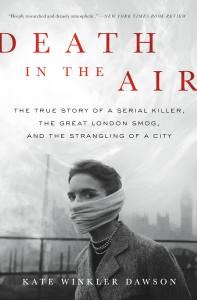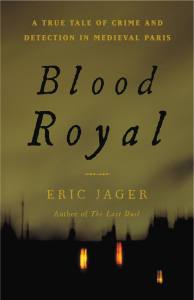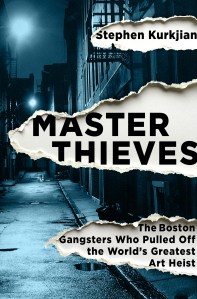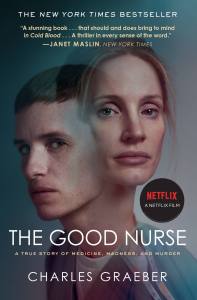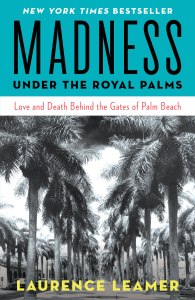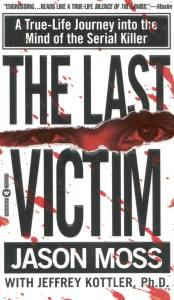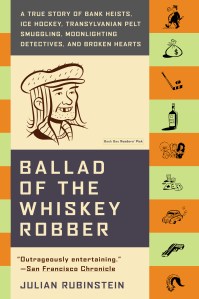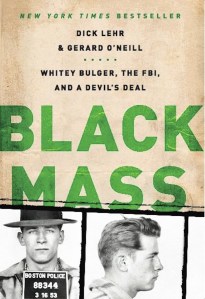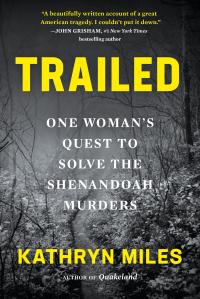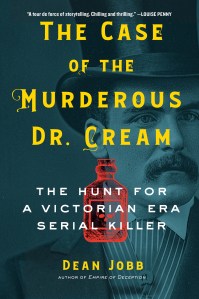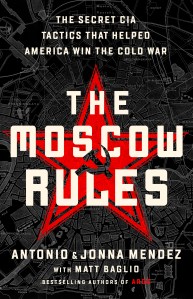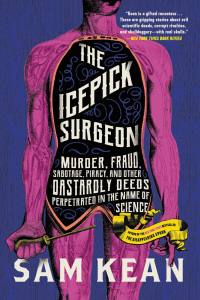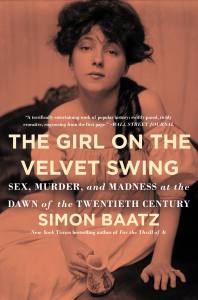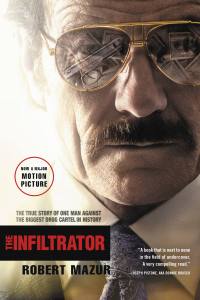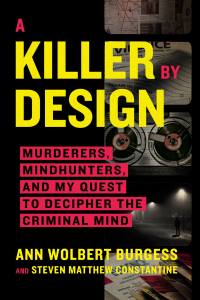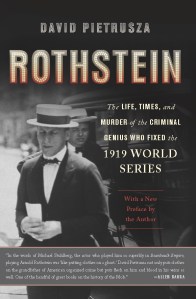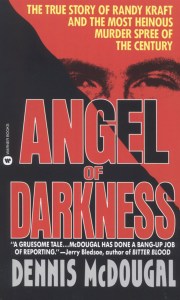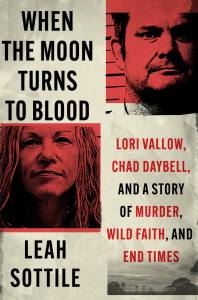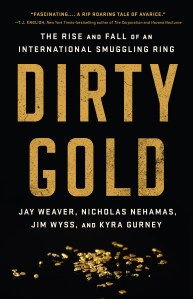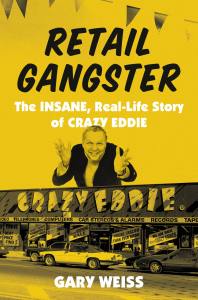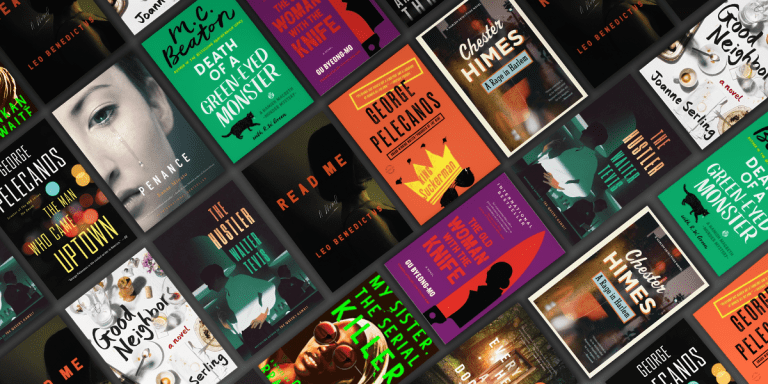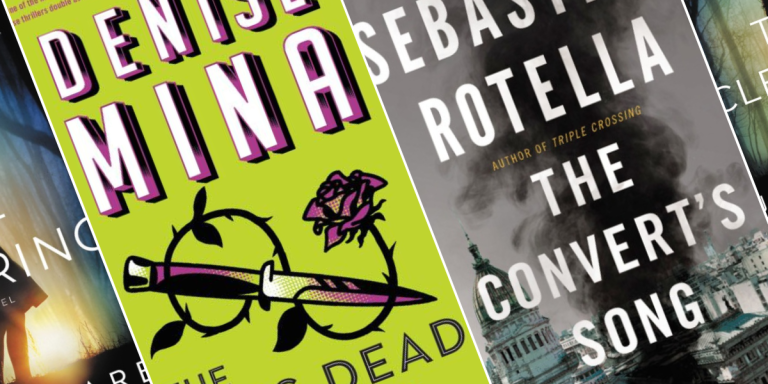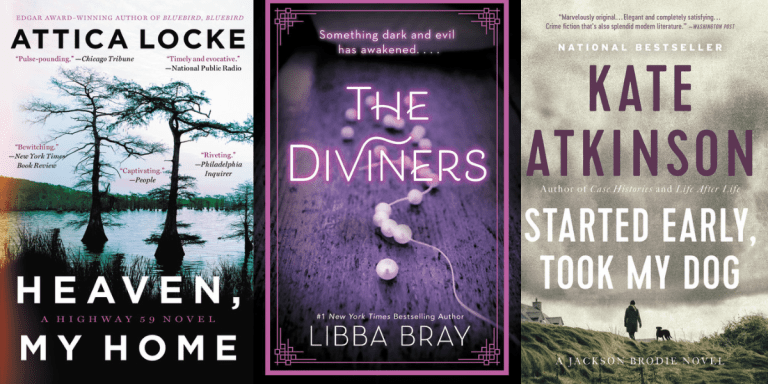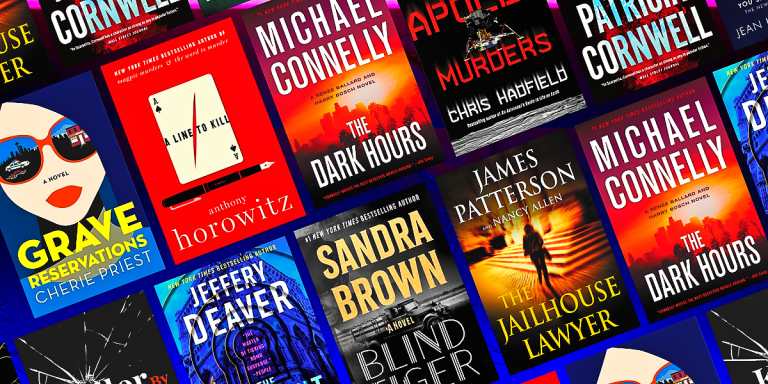Chilling True Crime

With twists and turns around every corner, these tantalizing terrors will keep you on your toes from start to finish.
All across London, women were going missing—poor women, forgotten women. Their disappearances caused little alarm, but each of them had one thing in common: they had the misfortune of meeting a quiet, unassuming man, John Reginald Christie, who invited them back to his decrepit Notting Hill flat during that dark winter. They never left.
The eventual arrest of the “Beast of Rillington Place” caused a media frenzy: were there more bodies buried in the walls, under the floorboards, in the back garden of this house of horrors? Was it the fog that had caused Christie to suddenly snap? And what role had he played in the notorious double murder that had happened in that same apartment building not three years before—a murder for which another, possibly innocent, man was sent to the gallows?
The Great Smog of 1952 remains the deadliest air pollution disaster in world history, and John Reginald Christie is still one of the most unfathomable serial killers of modern times. Journalist Kate Winkler Dawson braids these strands together into a taut, compulsively readable true crime thriller about a man who changed the fate of the death penalty in the UK, and an environmental catastrophe with implications that still echo today.
A rich portrait of a distant world, Blood Royal is a gripping story of conspiracy, crime and an increasingly desperate hunt for the truth. And in Guillaume de Tignonville, we have an unforgettable detective for the ages, a classic gumshoe for a cobblestoned era.
Nearly a decade passed before the Museum was finally hit. But when it finally happened, the theft quickly became one of the most infamous art heists in history: thirteen works of art valued at up to 500 million, by some of the most famous artists in the world, were taken. The Boston FBI took control of the investigation, but twenty-five years later the case is still unsolved and the artwork is still missing.
Stephen Kurkjian, one of the top investigative reporters in the country, has been working this case for over nearly twenty years. In Master Thieves, he sheds new light on some of the Gardner’s most abiding mysteries. Why would someone steal these paintings, only to leave them hidden for twenty-five years? And why, if one of the top crime bosses in the city knew about this score in 1981, did the theft happen in 1990? What happened in those intervening years? And what might all this have to do with Boston’s notorious gang wars of the 1980s?
Kurkjian’s reporting is already responsible for some of the biggest breaks in this story, including a meticulous reconstruction of what happened at the Museum that fateful night. Now Master Thieves will reveal the identities of those he believes plotted the heist, the motive for the crime, and the details that the FBI has refused to discuss. Taking you on a journey deep into the gangs of Boston, Kurkjian emerges with the most complete and compelling version of this story ever told.
When, in March of 2006, Charles Cullen was marched from his final sentencing in an Allentown, Pennsylvania, courthouse into a waiting police van, it seemed certain that the chilling secrets of his life, career, and capture would disappear with him. Now, in a riveting piece of investigative journalism nearly ten years in the making, Charles Graeber gives us the unbelievable true story.
Based on hundreds of pages of previously unseen police records, wire-tap recordings and videotapes and interviews with whistleblowers and confidential informants, and years of exclusive jailhouse conversations with Cullen himself, the homicide detectives who worked against the clock and administrators to try and finally crack the code on Cullen’s crimes, and Cullen’s fellow nurse Amy, an overworked single mom asked to choose between protecting her friend Charlie and stopping a potential serial killer, The Good Nurse weaves an urgent and terrifying tale of madness, humanity and heroism.
Cullen’s murderous career in the world’s most trusted profession spanned sixteen years and nine hospitals. Time and again he was fired or allowed to resign. But Cullen continued to work and kill, shielded by a hospital system that, by accident or design, successfully protected the institution while failing to protect patients. The Good Nurse is a searing indictment of a crushing and dehumanizing for-profit medical system, and an inspiring human story of the previously unknown individuals who chose to risk their jobs and lives to do the right thing. Mesmerizing and irresistibly paced, this book will make you look at hospitals and the people who work in them in an entirely different way.
Now, in Madness Under the Royal Palms, resident insider Laurence Leamer reveals the secrets and scandals of this South Florida island via a cast of characters that includes social climbers, trophy wives, sugar daddies, glamorous widows and their “escorts,” sociopathic multimillionaires, and elegant society queens. Dive into the unbelievable true story of love, lust, money, and murder in a uniquely American paradise.
The twisted, but fascinating, mind of a serial killer is revealed with terrifying consequences in this astonishing and shocking exploration. with 20 b&w photos.
Ballad of the Whiskey Robber is the completely bizarre and hysterical story of the crime spree that made a nobody into a somebody, and told a forlorn nation that sometimes the brightest stars come from the blackest holes. Like The Professor and the Madman and The Orchid Thief, Julian Rubinstein’s bizarre crime story is so odd and so wicked that it is completely irresistible.
Black Mass is a New York Times and Boston Globe bestseller, written by two former reporters who were on the case from the beginning. It is an epic story of violence, double-cross, and corruption at the center of which are the black hearts of two old friends whose lives unfolded in the darkness of permanent midnight.
In May 1996, two skilled backcountry leaders, Lollie Winans and Julie Williams, entered Virginia’s Shenandoah National Park for a week-long backcountry camping trip. The free-spirited and remarkable young couple had met and fallen in love the previous summer while working at a world-renowned outdoor program for women. During their final days in the park, they descended the narrow remnants of a trail and pitched their tent in a hidden spot. After the pair didn’t return home as planned, park rangers found a scene of horror at their campsite, their tent slashed open, their beloved dog missing, and both women dead in their sleeping bags. The unsolved murders of Winans and Williams continue to haunt all who had encountered them or knew their story.
When award-winning journalist and outdoors expert Kathryn Miles begins looking into the case, she discovers conflicting evidence, mismatched timelines, and details that just don’t add up. With unprecedented access to crucial crime-scene forensics and key witnesses—and with a growing sense of both mission and obsession—she begins to uncover the truth. An innocent man, Miles is convinced, has been under suspicion for decades, while the true culprit is a known serial killer, if only authorities would take a closer look.
”When a doctor does go wrong he is the first of criminals,” Sherlock Holmes observed during one of his most baffling investigations. “He has nerve and he has knowledge.” In the span of fifteen years, Dr. Thomas Neill Cream murdered as many as ten people in the United States, Britain, and Canada, a death toll with almost no precedent. Poison was his weapon of choice. Largely forgotten today, this villain was as brazen as the notorious Jack the Ripper.
Structured around the doctor’s London murder trial in 1892, when he was finally brought to justice, The Case of the Murderous Dr. Cream exposes the blind trust given to medical practitioners, as well as the flawed detection methods, bungled investigations, corrupt officials, and stifling morality of Victorian society that allowed Dr. Cream to prey on vulnerable and desperate women, many of whom had turned to him for medical help.
Dean Jobb transports readers to the late nineteenth century as Scotland Yard traces Dr. Cream’s life through Canada and Chicago and finally to London, where new investigative tools called forensics were just coming into use, even as most police departments still scoffed at using science to solve crimes. But then, most investigators could hardly imagine that serial killers existed—the term was unknown. As the Chicago Tribune wrote, Dr. Cream’s crimes marked the emergence of a new breed of killer: one who operated without motive or remorse, who “murdered simply for the sake of murder.” For fans of Erik Larson’s The Devil in the White City, all things Sherlock Holmes, or the podcast My Favorite Murder, The Case of the Murderous Dr. Cream is an unforgettable true crime story from a master of the genre.
The Moscow Rules tells the story of the intelligence breakthroughs that turned the odds in America’s favor. As experts in disguise, Antonio and Jonna were instrumental in developing a series of tactics—Hollywood-inspired identity swaps, ingenious evasion techniques, and an armory of James Bond-style gadgets—that allowed CIA officers to outmaneuver the KGB.
As Russia again rises in opposition to America, this remarkable story is a tribute to those who risked everything for their country, and to the ingenuity that allowed them to succeed.
Science is a force for good in the world—at least usually. But sometimes, when obsession gets the better of scientists, they twist a noble pursuit into something sinister. Under this spell, knowledge isn’t everything, it’s the only thing—no matter the cost. Bestselling author Sam Kean tells the true story of what happens when unfettered ambition pushes otherwise rational men and women to cross the line in the name of science, trampling ethical boundaries and often committing crimes in the process.
The Icepick Surgeon masterfully guides the reader across two thousand years of history, beginning with Cleopatra’s dark deeds in ancient Egypt. The book reveals the origins of much of modern science in the transatlantic slave trade of the 1700s, as well as Thomas Edison’s mercenary support of the electric chair and the warped logic of the spies who infiltrated the Manhattan Project. But the sins of science aren’t all safely buried in the past. Many of them, Kean reminds us, still affect us today. We can draw direct lines from the medical abuses of Tuskegee and Nazi Germany to current vaccine hesitancy, and connect icepick lobotomies from the 1950s to the contemporary failings of mental-health care. Kean even takes us into the future, when advanced computers and genetic engineering could unleash whole new ways to do one another wrong.
She told no one about the rape until, several years later, she confided in Harry Thaw, the millionaire playboy who would later become her husband. Thaw, thirsting for revenge, shot and killed White in 1906 before hundreds of theatergoers during a performance in Madison Square Garden, a building that White had designed.
The trial was a sensation that gripped the nation. Most Americans agreed with Thaw that he had been justified in killing White, but the district attorney expected to send him to the electric chair. Evelyn Nesbit’s testimony was so explicit and shocking that Theodore Roosevelt himself called on the newspapers not to print it verbatim. The murder of White cast a long shadow: Harry Thaw later attempted suicide, and Evelyn Nesbit struggled for many years to escape an addiction to cocaine. The Girl on the Velvet Swing, a tale of glamour, excess, and danger, is an immersive, fascinating look at an America dominated by men of outsize fortunes and by the women who were their victims.
The Infiltrator is the story of how Mazur helped bring down the unscrupulous bankers who manipulated complex international finance systems to serve drug lords, corrupt politicians, tax cheats, and terrorists. It is a shocking chronicle of the rise and fall of one of the biggest and most intricate money-laundering operation of all time-an enterprise that cleaned and moved hundreds of millions of dollars a year. Filled with dangerous lies, near misses, and harrowing escapes, The Infiltrator is as bracing and explosive as the greatest fiction thrillers—only it’s all true.
Lurking beneath the progressive activism and sex positivity in the 1970-80s, a dark undercurrent of violence rippled across the American landscape. With reported cases of sexual assault and homicide on the rise, the FBI created a specialized team—the “Mindhunters” better known as the Behavioral Science Unit—to track down the country’s most dangerous criminals. And yet narrowing down a seemingly infinite list of potential suspects seemed daunting at best and impossible at worst—until Dr. Ann Wolbert Burgess stepped on the scene. In A Killer By Design, Burgess reveals how her pioneering research on sexual assault and trauma caught the attention of the FBI, and steered her right into the middle of a chilling serial murder investigation in Nebraska. Over the course of the next two decades, she helped the budding unit identify, interview, and track down dozens of notoriously violent offenders, including Ed Kemper (“The Co-Ed Killer”), Dennis Rader (“(“BTK”), Henry Wallace (“The Taco Bell Strangler”), Jon Barry Simonis (“The Ski-Mask Rapist”), and many others. As one of the first women trailblazers within the FBI’s hallowed halls, Burgess knew many were expecting her to crack under pressure and recoil in horror—but she was determined to protect future victims at any cost. This book pulls us directly into the investigations as she experienced them, interweaving never-before-seen interview transcripts and crime scene drawings alongside her own vivid recollections to provide unprecedented insight into the minds of deranged criminals and the victims they left behind. Along the way, Burgess also paints a revealing portrait of a formidable institution on the brink of a seismic scientific and cultural reckoning—and the men forced to reconsider everything they thought they knew about crime.
Vallow’s case is sinuously complex. As investigators prod further, they find the accused Black Widow has an unusual number of bodies piling up around her.
Their arrest and subsequent prosecution laid bare more than a scheme between a few corrupt traders. Dirty Gold lifts the veil on a massive and very illegal international business that is more lucrative than trafficking cocaine, and often just as dangerous.
As this award-winning team of current and former Miami Herald reporters shows, illegal gold mines have become a haven for Latin American drug money. The gold is sold to metals traders, and ultimately to scores of unwitting Americans in their jewelry and phones. By following the trail of these three traders, Dirty Gold leads us into a sprawling criminal underworld that has never before been in full view.
Before Enron, before Madoff, before The Wolf of Wall Street, Eddie Antar’s corruption was second to none. The difference was that it was a street franchise, a local place that was in the blood stream of everyone’s daily life in the 1970s and early ’80s. And Eddie pulled it off with a certain style, an in your face blue collar chutzpah. Despite the fact that then U.S. Attorney Michael Chertoffcalled him “the Darth Vader of capitalism” after the extent of the fraud was revealed, one of the largest SEC frauds in American history after Crazy Eddie’s stores went public in 1984, Eddie was talked about fondly by the people who worked for him. They still do–there are myriads of ex-Crazy Eddie employee web pages that still attract fans, and the Crazy Eddie fraud scheme is now taught in every business school across the United States.
Many years have passed since the franchise went down in spectacular fashion but Crazy Eddie’s moment has endured the way that iconic brands and characters do–one only need Google the media outpouring that accompanied his death. Maybe it’s because it crystallized everything about 1970s New York almost perfectly, the merchandise and rise of consumer electronics (stereos!), the ads (cheesy!), the money (cash!). In Retail Gangster, investigative journalist Gary Weiss takes readers behind the scenes of one of the most unbelievable business scam stories of all time, a story spanning continents and generations, reaffirming the old adage that the truth is often stranger than fiction.
What to Read Next
By clicking 'Sign Up,' I acknowledge that I have read and agree to Hachette Book Group’s Privacy Policy and Terms of Use
